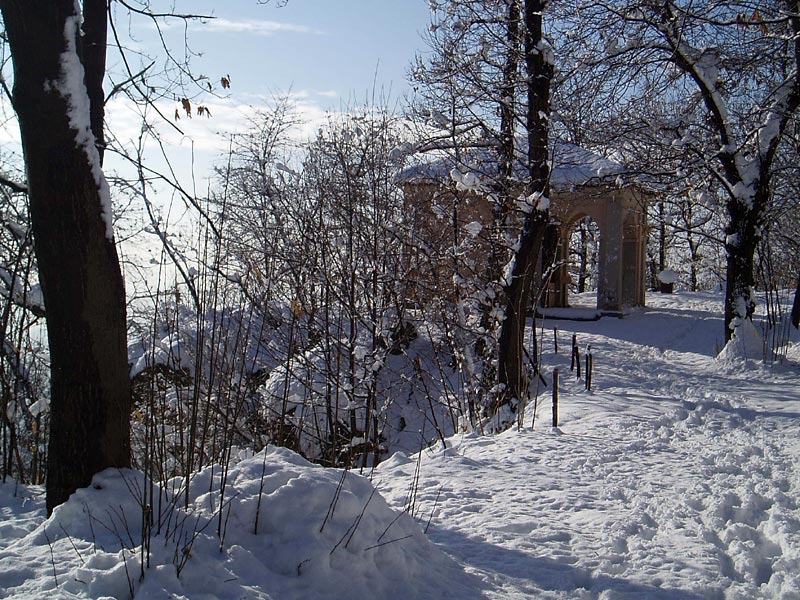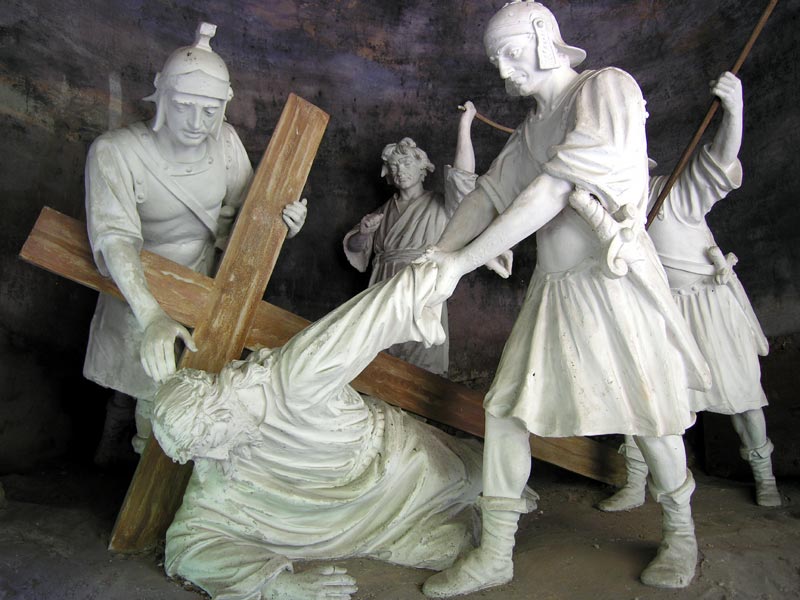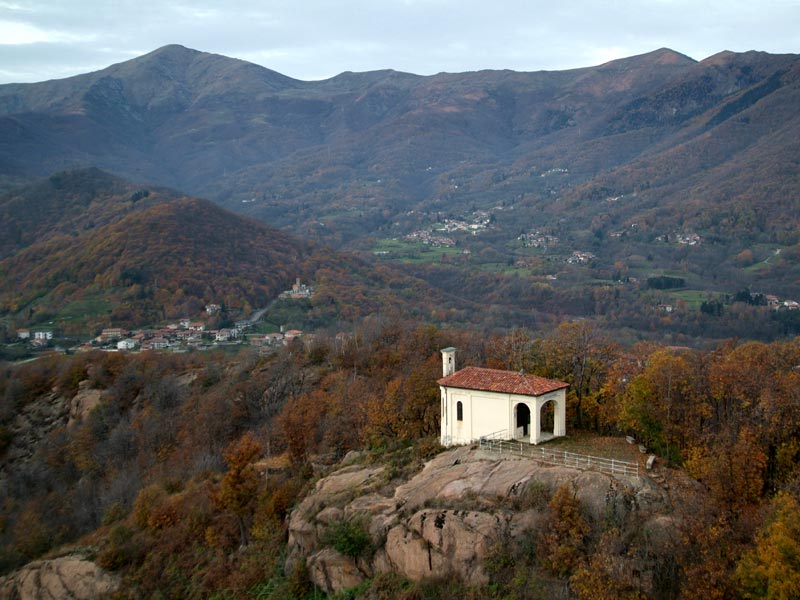Sacro Monte di Belmonte
On 5th July 2003, Sacro Monte di Belmonte together with the other Sacred Mountains of Piedmont (Crea, Domodossola, Ghiffa, Oropa, Orta, and Varallo) and the Sacred Mountains of Lombardy (Ossuccio and Varese) were declared by UNESCO "World Heritage Sites". Such recognition was decided by an international committee of experts with the following description: "The nine Sacri Monti (Sacred Mountains) of northern Italy are groups of chapels and other
architectural features created in the late 16th and 17th centuries and
dedicated to different aspects of the Christian faith. In addition to
their symbolic spiritual meaning, they are of great beauty by virtue of
the skill with which they have been integrated into the surrounding
natural landscape of hills, forests and lakes. They also house much
important artistic material in the form of wall paintings and statuary".
The inscription in the UNESCO list imposes "the obligation to ensure the identification, safeguard, preservation, enhancement, and transmission of the cultural and natural heritage to the future generations".
Some History
Since 1712, also the highest part of Belmonte dominating the sanctuary became a place of worship thanks to the Franciscan friar Padre Michelangelo from Montiglio, who planned the lay-out along which the chapels of the "Via Crucis" should have been built. He built some of these chapels with the help of both pilgrims and the local communities who supported this project. When Padre Michelangelo left, the project was continued by the other Superiors of the sanctuary, and was completed towards the half of the 19th century. The 14th chapel of the Deposition is lacking, since it was incorporated in the building of the monastery.
The devotional route of Sacro Monte di Belmonte is formed by 13 chapels representing the Passion of Christ. They are characterized by the same building typology, dry and essential, with one hall, circular or quadrilateral plan, preceded by a pronaos from where you look at the sacred scene.
- Chapel no. 1 - Jesus in front of Pilate
The chapel, with circular plan and rectangular pronaos, was built in 1712. The frescoes on the vault, well preserved, are ascribed to the painter Grosso from Ivrea and date back to the 18th century. - Chapel no. 2 - Jesus is condemned to death
The chapel, with a circular plan, was built in 1714. - Chapel no. 3 - Jesus falls the first time
The chapel, with rectangular plan and pronaos, was built in 1715. The more recent restoration works were carried out in 2002. - Chapel no. 4 - Jesus meets His Mother
The chapel, with rectangular plan and pronaos, was built in 1713. - Chapel no. 5 - Simon of Cyrene carries the cross
The chapel, with rectangular plan and pronaos, was built in 1773. - Chapel no. 6 - Veronica wipes the face of Jesus
It is the farthest chapel, situated in a wonderful panoramic position, and marks we are halfway of the devotional route. It was built in 1712. It is the chapel suffering more damages and acts of vandalism: as a matter of fact, the group of statues was completely destroyed. At the beginning of the current century, it passed under the patronage of the Lawyer Aurelio De Andreis, who transformed it into a family Chapel, adding an apse with an altar and a small bell tower. - Chapel no. 7 - Jesus falls the second time
The chapel, with rectangular plan and pronaos, began to be built in 1715. The building was finished only in 1773. The vault of the Chapel was painted in fresco by the painter Grosso from Ivrea in 1773. - Chapel no. 8 - Jesus meets the daughters of Jerusalem
The Chapel, with circular plan and rectangular pronaos, began to be built by the friars of the monastery in an uncertain period and was finished in 1781 thanks to the support provided by some families from Busano. The vault still preserves the frescoes by the painter Grosso. The more recent restoration works were carried out in 2002. - Chapel no. 9 - Jesus falls the third time
The Chapel, with circular plan and rectangular pronaos, was built between 1759 and 1765. The group of statues is unique, since the five statues dating back to the beginning of the current century are in white plaster with no color. They stand out on the gloomy background. - Chapel no. 10 - Jesus is stripped from His garments
The chapel, with rectangular plan and pronaos, was built in the same years of the previous one and financed with the alms collected by the Sanctuary. - Chapel no. 11 - Crucifixion
The chapel, with rectangular plan and pronaos, was built in 1719. The more recent restoration works were carried out in 2002. - Chapel no. 12 - Jesus dies on the cross
The chapel is different from all the others both for its position, dominating the Sanctuary and the Monastery, and the Bramante-style shape (central octagonal plan with a large portico surrounding it). It was built in 1715 by Valperga Community which preserved the patronage and reconstructed it after the partial collapses of the second half of the 18th century and 1825. - Chapel no. 13 - Deposition
The Chapel, with circular plan and rectangular pronaos, is the last chapel of the devotional route, and the last to be built. As a matter of fact, it was built only in 1825.
In front of it, in the highest point of the mountain, there is the bronze statue representing St Francis. The statue was created by the sculptor Giovanni Vogliazzi from Vercelli, and was inaugurated on 3rd July 1960.










